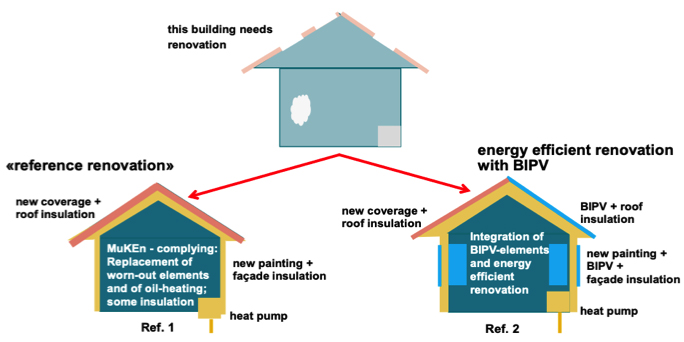How can we define a methodological assessment framework?
This common methodology aims to define terms, to prescribe common assumptions and input values like energy prices, future price developments, assessment periods, impact calculation methods, and system boundaries, and to provide a basis for optimizing possible BIPV solutions.
The impacts of Building-integrated photovoltaic (BIPV) solutions on energy generation and consumption, greenhouse gas emissions (GHG), and costs have to be assessed on the basis of a common methodology, which defines common terms and system boundaries, outlines calculation methods for the impact assessments, and proposes common input values (eg. life spans or energy prices and their future development) [1].

The conversion factors of energy delivered by district heating and cooling systems depend on the input share of the energy carriers needed to generate district heat or cold, and on the corresponding PE and emission factors.
- Collection of building data which is needed for the assessment
- Definition of the necessary reference renovation solution (reference case without BIPV)
- Definition of the renovation solution with BIPV
- Determination of system boundaries, general input values (energy prices, interest rates, life spans, assessment period, possible subsidies and remuneration rates for fed-back electricity)
- Collection/calculation of energy, emission and cost data to determine impacts of the BIPV renovation solution
- Impact calculation for the reference renovation and for the BIPV renovation case (e.g. with the INSPIRE-tool).
- Option 1: Further calculations to determine impacts on revenues for the building owner, return on equity, rent increases, etc.
- Option 2: Sensitivity calculations for different energy prices.



